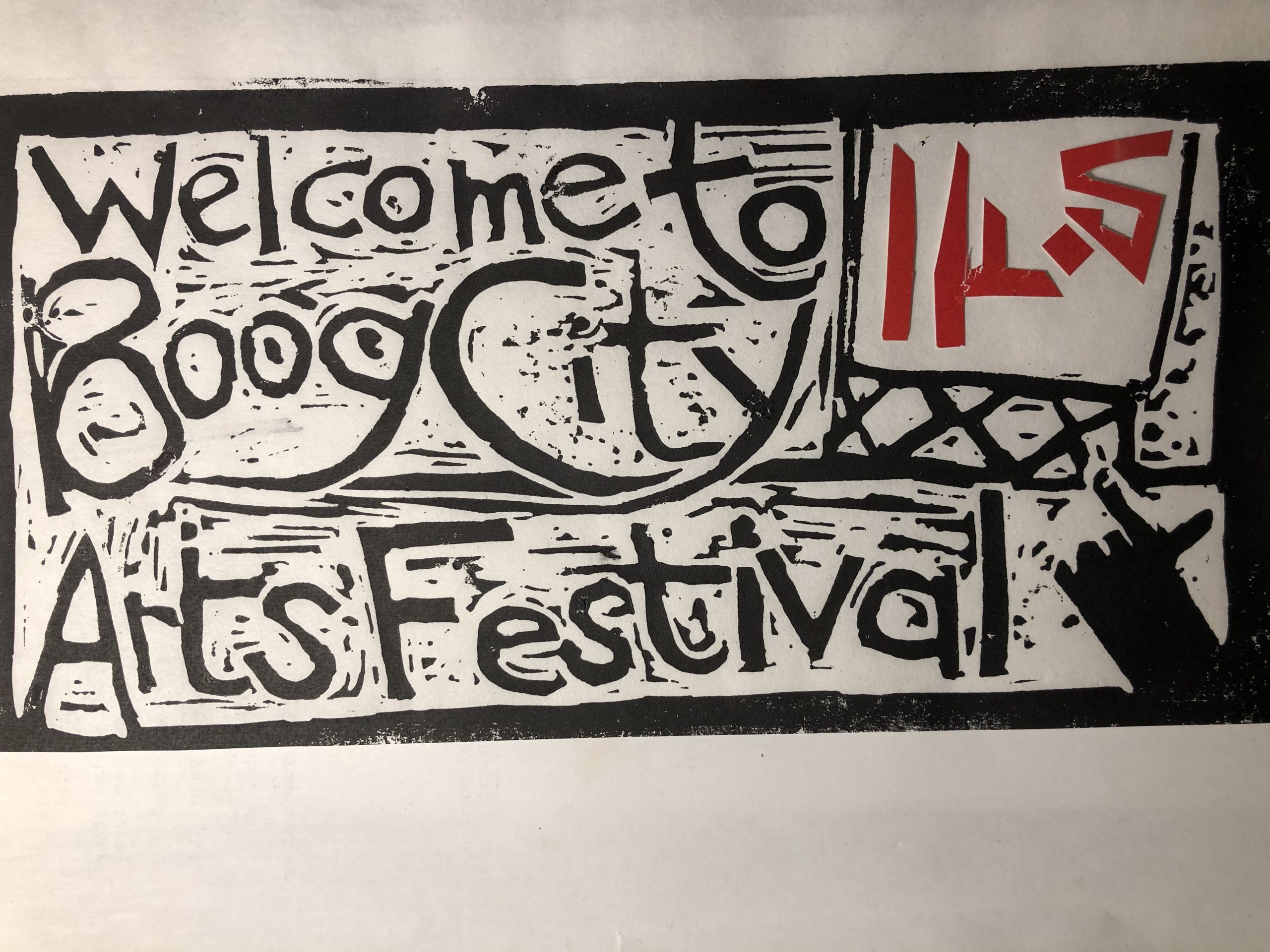by Mark Lamoureux

With the quality of print-on-demand services steadily increasing, the face of book publishing is changing. Whereas a handful of publishers once stood as the arbiters of the canon and strove for catholicity with their publications, now that many of the barriers to entry have been surmounted by digital and POD services, publishers have begun to operate more like record labels focusing on a certain aesthetic or “sound.” A diverse array of publishing concerns has sprung up, with any number of aesthetic credos and agendas, and this multiplicity of publishing has allowed more voices to make it to print and lateralized the organization of the book publishing industry. It is a climate in which presses like White Stag Publishing can flourish.
White Stag Publishing was founded in 2013 in Phoenix by editors Courtney Leigh Jameson and Kathryn Gutting, who go by the monikers The Bowhunter and the Taxidermist in official communications. As per their website, White Stag Publishing:
“. . . are here for the poetry, for poetry’s sake; for the emotive experience of language & form into the imaginatarium of the psyche. We humbly invite the dramatic, the strange, the deadly swirls of mythology & folklore, the magical expanse of the Otherworld that confounds us so. White Stag aims to bring forth the imagination in a way that impacts our readers & encourages the imagination of others to flourish. “
At present, White Stag Publishing’s single-author-books include titles from Adam Stutz, Kailey Tedesco, Carleen Tibbets, Kim Vodicka, and Sara Vander Zwaag. While all of these poets’ styles are quite different from one another, what unites them is a quality of the outlandish or the outré. This is not New Yorker poetry. Whereas major print publishers must focus on sales and the whims of an industry that is largely hostile to poetry, smaller presses can afford, barely, to take chances on new and unusual voices. It isn’t easy, still, and presses are turning to innovative strategies to increase sales and supplement their incomes. Enter the merch.
In the world of Spotify and other streaming services and their miserly and exploitive handling of artists, musicians now make most of their money off touring and most of the money from touring comes from the merch table. While this is a symptom of a late capitalist dystopia, fans are happy to have their t-shirts, gig posters, patches, stickers, and other ephemera. White Stag has partially adopted this model by delving into merch. In addition to her role as editor of White Stag Publishing, Courtney Leigh Jameson also runs Crimson Sage Apothecary, a mail-order business offering “Ritual Tools & Supplies, Altar Decor, Herbal Alchemy, & All Natural Skincare” that “primarily focuses on apothic products that inspire self-care, ritual, & healing.”
White Stag Publishing offers items culled from Crimson Sage’s wheelhouse as well as similar businesses, among other artifacts, alongside purchase of the books. These items are carefully selected for a unified aesthetic experience. For example, accompanying Kailey Tedesco’s remarkable Foreverhaus with its “themes of Bloody Mary, the Victorian parlor, & the garden of burial & rebirth” are a “Dopplegänger Blossom Candle, Cherry Pungent & Ghosts Organic Loose Leaf Tea, Bloody Mary Corn Husk Doll, Ghostlore Feather Quill, a Black Rose Casketed In Gold Pendant and a Foreverhaus Vintage Keychain & Skeleton Key.” In a digital world, these actual objects that reference the imagery of the poems are a refreshing way of extending the aesthetic experience of the work into new media. While mainstream publishers suffer from a reputation of stuffy elitism, overtures such as these make poetry fun, but also provide an aesthetic experience that invites contemplation.
White Stag Publishing’s other signature publishing strategy will also make modernist purists cringe: a series of themed anthologies on various subjects. While a staple of Victorian print culture, the themed anthology was demonized in the 20th century, perhaps in response to some callously and poorly assembled ones. But White Stag’s are not your father’s themed anthologies. The press is engaged in publishing a series of anthologies based on the classical elements, beginning with #Watertome and continuing through soon-to-be-published #Firebrand and air and earth to follow. The editors state that “our anthologies include a thematic element to help inspire writings from people of various backgrounds.” And this is indeed the case of the anthologies they have published to date #Watertome, #Ghostmotel, #Neogodesses and #Psychologia. The roster of authors in each of these tomes is likely to include authors familiar to readers of poetry and many, many unfamiliar names. The themes offer a democratizing locus which invites work from an array of authors from different tributaries of the literary river who relate to each other in compelling ways.
For example, from #Watertome, Kerri Linn Merrifield’s “Rainbow’s End Redux:”
“sunrainpsalm
willowlitany
kingfishercanticle
limestoneoffertory—
Ontarioprayer—
If I am not sacrificed
to osprey gods.
I will bow to holy cove lilies.”
Also from #Watertome, Lisa Sice’s “A Summer in the Future for Rachel Carson”:
I have come to the place
where our lake nudged
the shore. I have come
to harvest water from
the mud that remains.
But today, I must dig
deeper beneath a crust
drier and thicker than
yesterday’s. Today,
I squeeze and wring,
but I barely fill half
my jars. What will
tomorrow bring? Will
I become so dry as
the oleander in my yard?
I have forgotten the color
of blooms. I suppose there
is some sort of comfort
that the end will come before
I forget the taste of water.
All in all, White Stag Publishing is an exciting press that offers work that will appeal to fans of the outré and fantastic, imaginary worlds and paranormal mysteries. It is a press with a holistic aesthetic vision that is committed to diversity and innovation in literature, with a sense of wonder and whimsy. Like all small presses, they cannot exist without readerships, so don’t delay in visiting their website and taking a peek beyond the veil into the literary and aesthetic world that the editors are building.
 MARK LAMOUREUX (https://www.instagram.com/tongarsuk) lives in New Haven, Conn. His work has been published in print and online in Elderly, Denver Quarterly, Jacket, and Fourteen Hills among others. He is the author of five full-length collections of poems: Horologion (Poet Republik, Ltd.) It’ll Never Be Over For Me (Black Radish Books), 29 Cheeseburgers + 39 Years (Pressed Wafer), Spectre (Black Radish Books), and Astrometry Organon (BlazeVOX Books).
MARK LAMOUREUX (https://www.instagram.com/tongarsuk) lives in New Haven, Conn. His work has been published in print and online in Elderly, Denver Quarterly, Jacket, and Fourteen Hills among others. He is the author of five full-length collections of poems: Horologion (Poet Republik, Ltd.) It’ll Never Be Over For Me (Black Radish Books), 29 Cheeseburgers + 39 Years (Pressed Wafer), Spectre (Black Radish Books), and Astrometry Organon (BlazeVOX Books).

